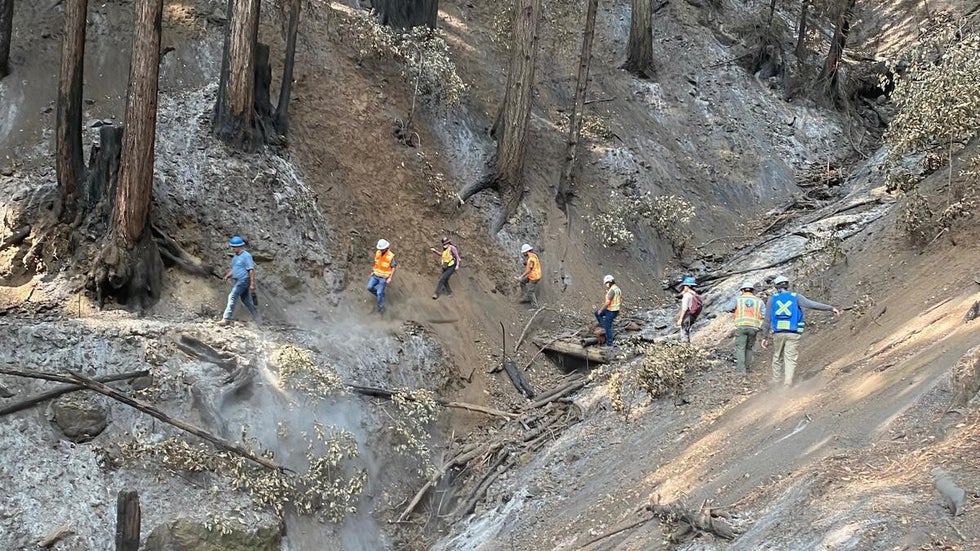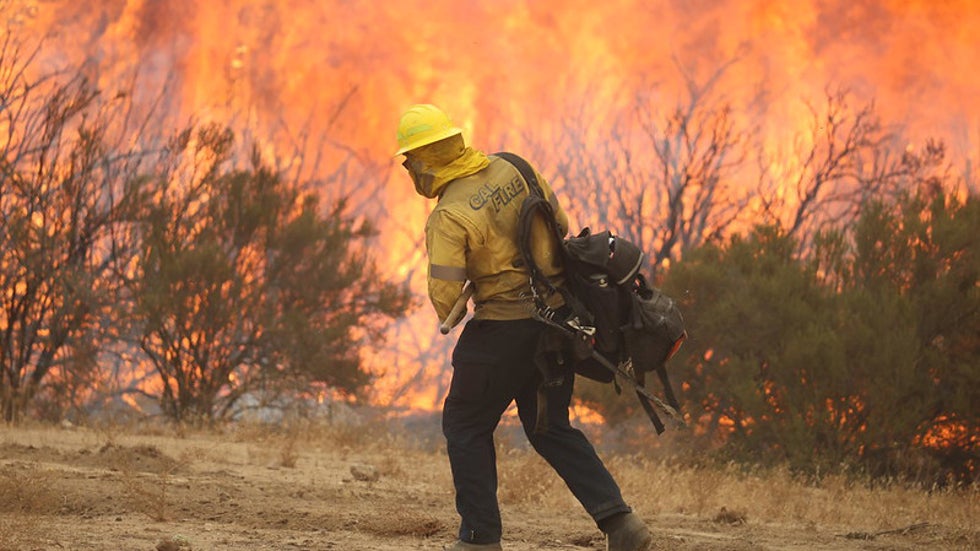Jan Wesner Childs
Terrain left barren by wildfires is most vulnerable to an especially dangerous and fast-moving type of landslide that scientists call "debris flows."
Known less formally as mudslides, these flows are typically triggered by short, intense rainstorms and can send a wall of water, soil, ash, vegetation, rocks and other debris careening downhill, sweeping away or burying everything in their path.
"A debris flow is kind of a flood on steroids," Jason Kean, a debris flow expert with the U.S. Geological Survey, told weather.com in a previous interview. "It’s all bulked up with rocks, mud, even boulders – and boulders can be the size of cars."
(MORE: What Is An Atmospheric River?)
The threat of landslides typically increases in the fall and winter when wetter weather is more likely across the West Coast. In particular, storms this time of year ramp up the danger.
Here's what you should know.
The USGS and other agencies work together to assess the debris flow threat each year in specific areas where wildfires have burned. The hazard level for each one is rated based on several factors and is available for the public to view here.
Burn scars are trails of scorched earth left behind in a wildfire's path. Any burn scar can potentially be at risk of debris flows, and conditions can change over time depending on the weather and other factors.
 A wildfire burn scar is seen in this photo tweeted from Santa Cruz County, California, on Oct. 21, 2021.
A wildfire burn scar is seen in this photo tweeted from Santa Cruz County, California, on Oct. 21, 2021.Wildfires change certain characteristics of soil, making it less likely to absorb water, which creates conditions ripe for flash flooding and debris flows. "As (the water) runs off, it picks up all these loose soil particles that no longer have vegetation to hold them in place and then it bulks up into that debris flow that can move really fast and start actually within minutes of intense rainfall," Kean said.
The elevated risk of debris flows in a burn scar can last up to five years after a fire. Cumulative effects of repeated fires – often seen in the same areas in California, for example – can make things even worse.
Debris can rush down a hillside at more than 35 mph and then flatten out and spread even farther when it reaches the bottom of a slope.
(WATCH: Dramatic Changes Caused By Drought In California)
At least 20 people were killed when mudslides with walls of debris as tall as 30 feet struck the Santa Barbara County community of Montecito in 2018. On average, 25 to 50 people are killed by landslides every year in the United States, according to the USGS.
California's historic drought has helped make wildfires worse. While 2022 saw fewer acres burned than other recent years, 2021 was a record year for wildfires. Most of the state's largest, deadliest and most destructive wildfires on record have occurred since 2017.
 A firefighter works the Fairview Fire in Riverside County, California, in September 2022.
A firefighter works the Fairview Fire in Riverside County, California, in September 2022.California has a distinct wet season that lasts from late fall into early spring, and a dry season with little to no rainfall from late spring to early fall. "That extreme variance is related to an area of high pressure that sets up off the West Coast in summer and prevents any significant moisture from reaching the state," said weather.com senior meteorologist Chris Dolce. "Conversely, in winter, that high weakens and shifts farther south, which opens the door for Pacific storms to affect California with heavy rain and mountain snow."
This year's wet season is off to a good start in much of California, but it remains to be seen if that will continue in the months ahead. Even with adequate rain and snow, experts say it could take years to catch up from the precipitation deficit.
(WATCH: Drought Emergency Declared By Southern California Water Provider)
Research has linked California's progressively more extreme fire seasons to climate change, and a study published in 2020 by the University of California Institute of Transportation Studies found that the risk of post-wildfire debris flows is also likely to go up.
Any threat of a debris flow should be taken very seriously. People in areas at risk should be alert if any rain develops, and don't wait for an evacuation order to leave if heavy rains develop.
The Weather Company’s primary journalistic mission is to report on breaking weather news, the environment and the importance of science to our lives. This story does not necessarily represent the position of our parent company, IBM.
The Weather Company’s primary journalistic mission is to report on breaking weather news, the environment and the importance of science to our lives. This story does not necessarily represent the position of our parent company, IBM.

No comments:
Post a Comment